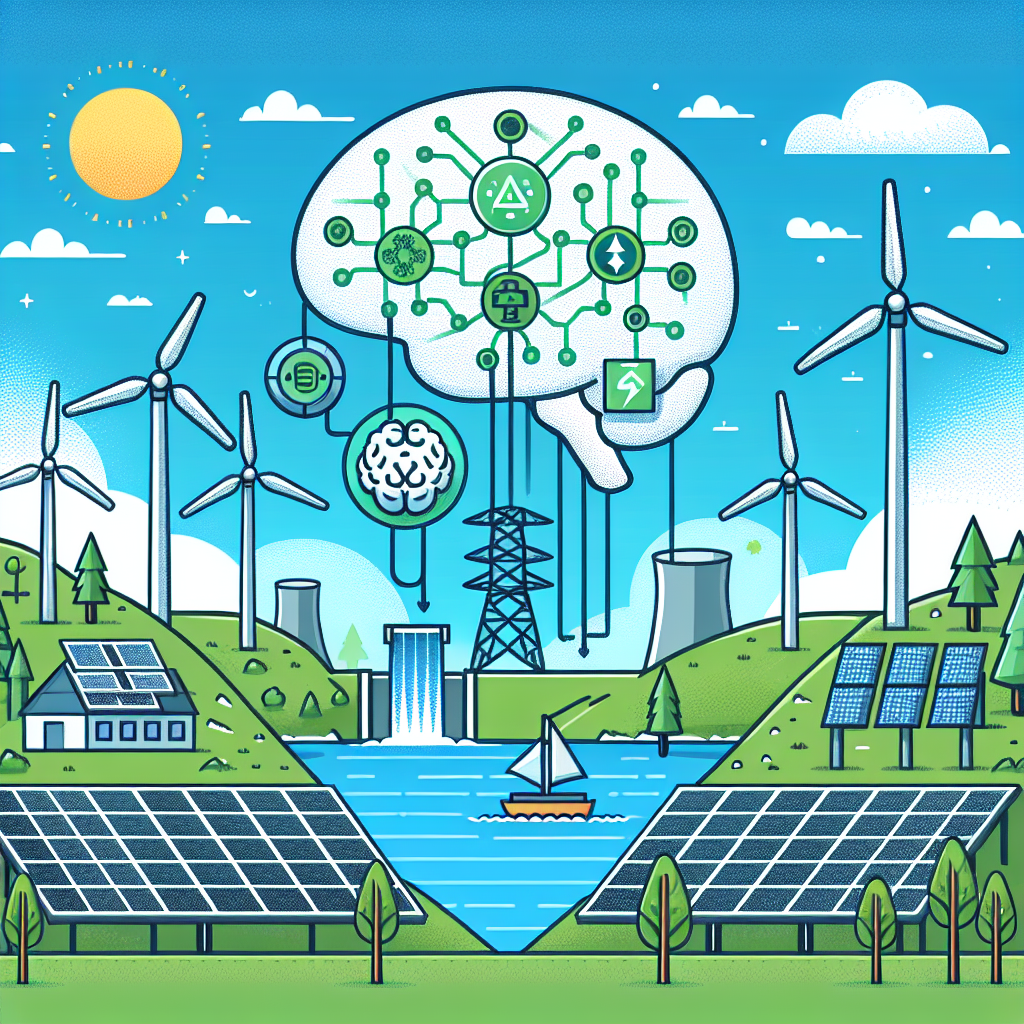Leveraging AI to Improve Renewable Energy Distribution
Introduction
Renewable energy sources such as solar, wind, and hydroelectric power are becoming increasingly important in our efforts to combat climate change and transition to a more sustainable energy system. However, one of the biggest challenges facing renewable energy is the variability of these sources, which can make it difficult to ensure a stable and reliable supply of power. This variability can lead to issues such as grid instability, power outages, and wasted energy.
To address these challenges, researchers and engineers are turning to artificial intelligence (AI) to improve the distribution of renewable energy. AI technologies can help optimize the generation, storage, and distribution of renewable energy, making it more efficient, reliable, and cost-effective. In this article, we will explore how AI is being leveraged to improve renewable energy distribution and the potential benefits it offers.
Benefits of Leveraging AI for Renewable Energy Distribution
1. Predictive Maintenance: AI can be used to predict when renewable energy systems, such as solar panels or wind turbines, are likely to fail. By analyzing data from sensors and other sources, AI algorithms can identify patterns and trends that indicate potential issues before they occur. This allows operators to schedule maintenance proactively, reducing downtime and improving the overall efficiency of the system.
2. Energy Forecasting: AI can also be used to forecast energy production from renewable sources more accurately. By analyzing historical data, weather patterns, and other factors, AI algorithms can predict how much energy will be generated from solar panels, wind turbines, or other sources in the future. This information can help grid operators better plan and manage the distribution of renewable energy, reducing the risk of power outages and maximizing the use of renewable resources.
3. Grid Optimization: AI can help optimize the distribution of renewable energy on the grid by coordinating the flow of electricity from different sources and managing energy storage systems. By analyzing real-time data and adjusting power flows accordingly, AI algorithms can help balance supply and demand, reduce congestion on the grid, and minimize energy losses. This can improve the stability and reliability of the grid, making it easier to integrate renewable energy sources into the existing infrastructure.
4. Demand Response: AI can also be used to implement demand response programs that incentivize consumers to adjust their energy usage based on the availability of renewable energy. By analyzing data from smart meters and other sources, AI algorithms can identify opportunities to shift energy consumption to times when renewable energy is abundant and cheap. This can help reduce peak demand, lower energy costs, and increase the overall efficiency of the grid.
5. Energy Trading: AI technologies can facilitate the trading of renewable energy between different players in the energy market. By using algorithms to match buyers and sellers based on their preferences and constraints, AI can help optimize the exchange of renewable energy and maximize the value of each transaction. This can create new opportunities for renewable energy producers to sell their excess energy to other parties, creating a more dynamic and efficient market for renewable energy.
FAQs
Q: How does AI improve the efficiency of renewable energy distribution?
A: AI can improve the efficiency of renewable energy distribution by optimizing the generation, storage, and distribution of energy. By analyzing data and making real-time adjustments, AI algorithms can help balance supply and demand, reduce energy losses, and maximize the use of renewable resources. This can lead to a more reliable and cost-effective energy system.
Q: What are some examples of AI applications in renewable energy distribution?
A: Some examples of AI applications in renewable energy distribution include predictive maintenance, energy forecasting, grid optimization, demand response, and energy trading. These technologies can help improve the reliability, stability, and efficiency of renewable energy systems, making it easier to integrate them into the existing energy infrastructure.
Q: How can AI help integrate renewable energy into the existing grid infrastructure?
A: AI can help integrate renewable energy into the existing grid infrastructure by optimizing the distribution of energy, coordinating the flow of electricity from different sources, and managing energy storage systems. By analyzing data and making real-time adjustments, AI algorithms can help balance supply and demand, reduce congestion on the grid, and maximize the use of renewable resources.
Q: What are the potential benefits of leveraging AI for renewable energy distribution?
A: The potential benefits of leveraging AI for renewable energy distribution include improved reliability, stability, and efficiency of renewable energy systems. AI technologies can help optimize the generation, storage, and distribution of energy, making it more cost-effective and sustainable. This can help accelerate the transition to a more sustainable energy system and reduce the impact of climate change.
Conclusion
AI technologies have the potential to revolutionize the distribution of renewable energy by optimizing the generation, storage, and distribution of energy. By leveraging AI algorithms to analyze data and make real-time adjustments, we can improve the reliability, stability, and efficiency of renewable energy systems. This can help accelerate the transition to a more sustainable energy system and reduce the impact of climate change. As we continue to develop and deploy AI technologies in the energy sector, we can look forward to a future where renewable energy plays a central role in meeting our energy needs.

